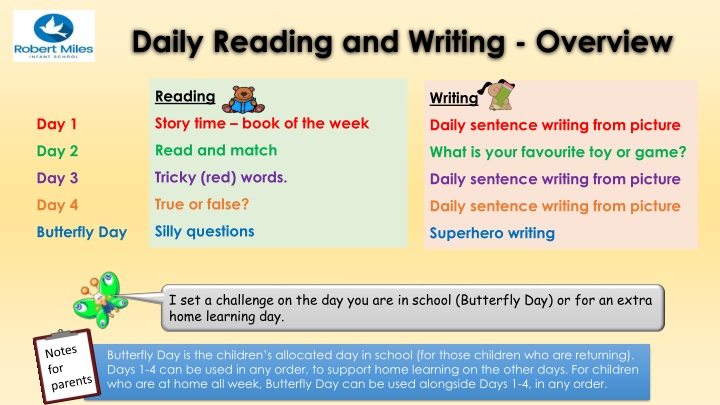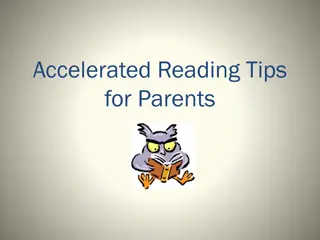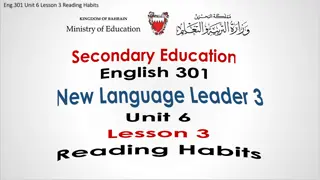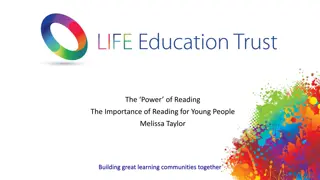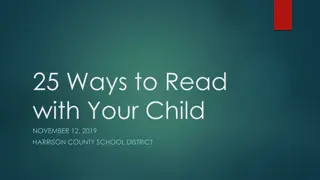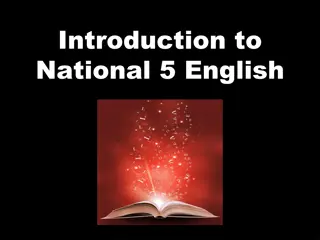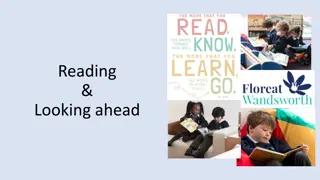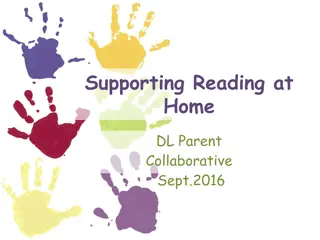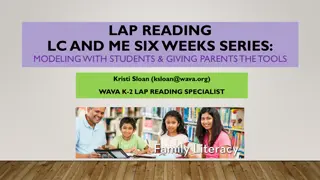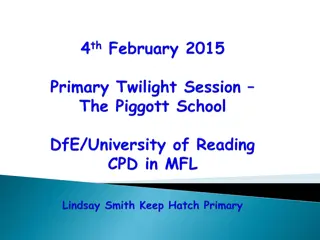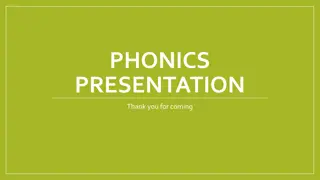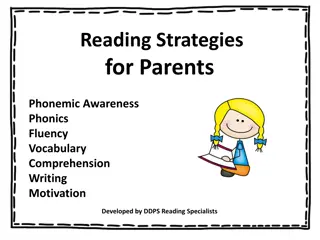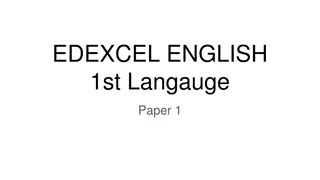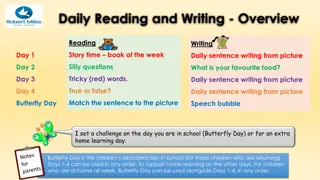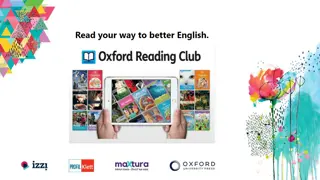Daily Reading and Writing Activities for Children
Engage children in daily reading and writing activities with a focus on story time, sentence writing, word recognition, and favorite toys/games discussion. The provided schedule outlines tasks for each day, including reading Superworm by Julia Donaldson, practicing tricky red words, and encouraging sentence writing based on pictures. The activities aim to promote literacy skills and vocabulary development in an interactive way, suitable for both home learning and school environments.
Download Presentation

Please find below an Image/Link to download the presentation.
The content on the website is provided AS IS for your information and personal use only. It may not be sold, licensed, or shared on other websites without obtaining consent from the author.If you encounter any issues during the download, it is possible that the publisher has removed the file from their server.
You are allowed to download the files provided on this website for personal or commercial use, subject to the condition that they are used lawfully. All files are the property of their respective owners.
The content on the website is provided AS IS for your information and personal use only. It may not be sold, licensed, or shared on other websites without obtaining consent from the author.
E N D
Presentation Transcript
Daily Reading and Writing - Overview Reading Writing Story time book of the week Day 1 Daily sentence writing from picture Read and match Day 2 What is your favourite toy or game? Tricky (red) words. Day 3 Daily sentence writing from picture True or false? Day 4 Daily sentence writing from picture Silly questions Butterfly Day Superhero writing I set a challenge on the day you are in school (Butterfly Day) or for an extra home learning day. Butterfly Day is the children s allocated day in school (for those children who are returning). Days 1-4 can be used in any order, to support home learning on the other days. For children who are at home all week, Butterfly Day can be used alongside Days 1-4, in any order.
Day 1 Reading Read Superworm. If you don t have a copy of the story at home you can use one of the links below. https://stcharlescatholicprimary.com/brightenupday/superworm-by-julia-donaldson-childrens-bedtime-stories/ Superworm by Julia Donaldson - book, teaching resources, story ...
Day 1 Writing . ? Can you write some words from the picture? _________________________________________ _________________________________________ _________________________________________ Can you write a sentence? _________________________________________________________________________________________________ _________________________________________________________________________________________________
Day 2 Reading Can you read these words and find the matching picture?
Day 2 Writing . ? Can you list some of your favourite toys or games? What is your favourite toy or game? _________________________________________ _________________________________________ _________________________________________ Can you write a sentence about one of them? _________________________________________________________________________________________________ _________________________________________________________________________________________________
Day 3 Reading Keep practising these tricky words.Try the first group, and then move onto the other ones if you need more challenge. You can read them on here, or make up a game. For example, write the words on paper and then place them around the room. Follow an instruction, such as hop to she jump to they. I to we he she they was said of all my go the going are you At school, we call tricky words Red Words . They are tricky because they cannot be sounded out using phonics, so we need to remember them by sight. This will help to increase the children s sight vocabulary and the speed with which they read (fluency).
Day 3 Writing . ? Can you write some words from the picture? _________________________________________ _________________________________________ _________________________________________ Can you write a sentence? _________________________________________________________________________________________________ _________________________________________________________________________________________________
Day 4 Reading With help from an adult or older brother / sister, read these sentences about Superworm then decide if they are true or false? Thumbs up for True and thumbs down for false. Superworm is super long. Superworm has got lots of friends. The lizard is very kind to Superworm. A big black crow picks up Superworm with his claws. Superworm by Julia Donaldson - book, teaching resources, story ... false false true true If the children are able to use their phonics to read some words, that s great. However, because the purpose of this activity is to focus on their understanding of the story (comprehension), it is fine if someone reads the sentences to them.
Day 4 Writing . ? Can you write some words from the picture? _________________________________________ _________________________________________ _________________________________________ Can you write a sentence? _________________________________________________________________________________________________ _________________________________________________________________________________________________
Butterfly Day Reading Can you read these silly questions, using your phonics? They are so silly, because the answer is very obviously Yes or No. Remember to look at each word to see if you know it straight away. If not, look for special friends and then sound out and blend each word. Black questions focus on Set 1 sounds. The ones in green focus on Set 2, with the odd Set 3 sound. Can a fish swim ? Will you see a book reading itself? Has a fox got six legs? Is it dark at night? Can a chip run? Is the queen three years old? By answering Yes or No, the children demonstrate if they have understood the question (comprehension). For longer words, e.g. reading , we chop it up , so that they sound out and blend the first part of the word and then the rest. Some children may recognise the word ending (suffix) ing straight away, without sounding it out. yes yes no no
Butterfly Day Writing . ? If you could be a superhero for a day, what would your special power be? What would you use it for? Remember to write in full sentences, using finger spaces between each word. The children will probably spell things the way they sound, using the sounds they know. For example, if they choose to write fly they may spell it fligh .
